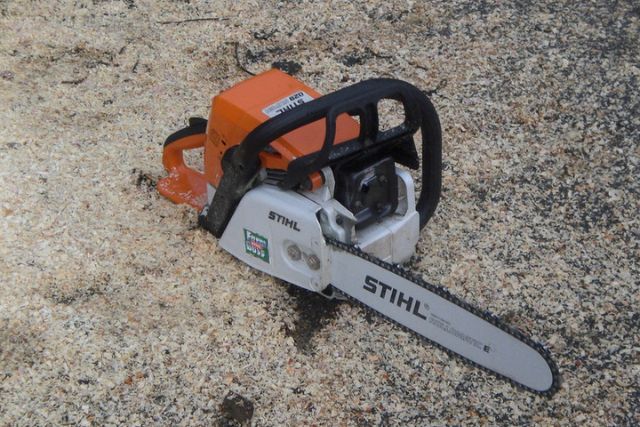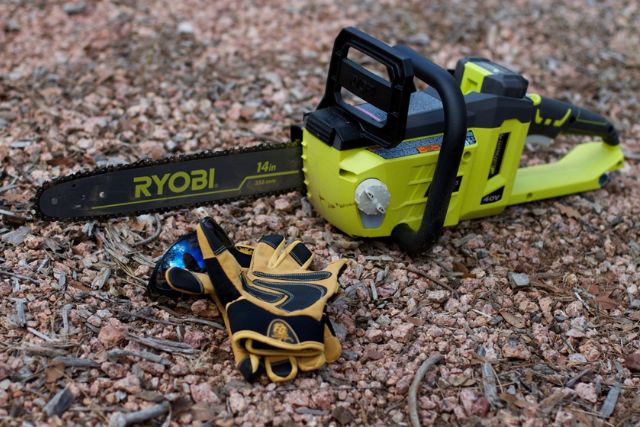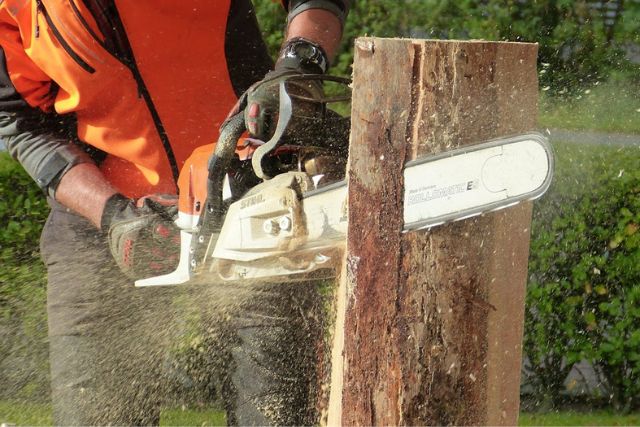In the realm of power tools, few are as versatile and essential as the chainsaw. Picture this: you’re standing amidst a dense forest, armed with a tool that can sculpt, shape, and slice through timber with ease. That tool? The mighty chainsaw. But hold on tight, because we’re not just talking about any chainsaw – we’re delving into a realm where innovation and craftsmanship collide to create a diverse array of timber titans.
From the gentle hum of electric models to the thunderous roar of gas-powered giants, each chainsaw has its own story to tell and its own unique set of skills. So whether you’re a seasoned lumberjack or a curious DIY enthusiast, prepare to embark on an adventure like no other. Are you want to know different types of chainsaws?
Types Of Chainsaws:
Here are Different types of chainsaws and their pros and cons
Fuel Powered Chainsaw:

Thermal chainsaws are devices that are powered by a petrol engine. They are efficient but more polluting, and because they require a fuel tank, they are heavier than other types of chainsaws. They are mainly used by professionals and are the best machines for large and tall trees.
Advantages:
Powerful engine, with great autonomy thanks to the fuel, and excellent efficiency.
Disadvantages:
pollution, noise pollution, weight, manual start, weight, expensive and restrictive maintenance.
Wired Electric Chainsaw:

Often small in size, the wired electric chainsaw is convenient and poses little risk. It is the best machine for private individuals according to comparisons. It is very useful for small gardens and can cut small diameter trees.
Advantages:
economical and environmentally friendly consumption, light, handy, instant start, low noise, easy maintenance.
Disadvantages:
limited power, wire sometimes too short.
Battery chainsaw:

Even more interesting than the previous model, the battery-powered electric chainsaw has all the features of its wired counterpart but offers real freedom of movement because it is not connected according to comparisons. It is a model that has been acclaimed in customer reviews and product tests as the best chainsaw.
Advantages:
economical consumption, environmentally friendly, instant start, low noise, easy maintenance.
Disadvantages:
limited power, small cutting diameter, weight, and expensive maintenance (battery change).
Main Attention Points For How To Choose A Chainsaw:
The comparisons allowed us to highlight some of the most important criteria for choosing your chainsaw.
Solidity and reliability: To test the reliability of the chainsaw you choose, it is advisable to choose models made of solid plastic and steel. As for reliability, remember to check that the model you choose will be suitable for your needs.
Type of power supply and power rating: You will have to choose between electric, thermal or battery-powered chainsaws. Wired electric chainsaws are particularly suitable for domestic work such as pruning, felling, limbing, and making firewood. Generally, it will cut branches up to 45 centimeters in diameter and its power varies between 1,000 and 2,000 watts. Battery-powered chainsaws will cut branches up to 25 centimeters in diameter and range from 500 to 1,100 watts. The autonomy will rarely exceed 30 minutes. Thermal chainsaws are the most powerful, they can reach up to 7,000 Watts and have a very high cutting capacity. They are the best machines on the market and are perfect for large jobs according to comparisons.
What Are The Features Of The Chainsaw?
The Chain:
This is the most important part of the chainsaw. To perform any type of work, you will have to choose a guide bar between 50 and 80 centimeters, but 20 to 40 centimeters will be enough if you only want to prune young trees or make small logs. The type of chain is also important (low kickback, chisel, or half-chisel) as well as the cutting speed according to the comparisons.
Ergonomics:
Another important element. You will have to take into account the weight, the ergonomic anti-vibration handle, the sound power, the balance and good grip, the ease of adjustment and the safety options that the chainsaw offers.
Various questions:
Which chainsaw to choose between thermals, wires and batteries?
It all depends on what you use it for. Thermals are useful for cutting large trees, while battery-powered models are less polluting and easier to use. Wired devices are to be excluded if your exterior is large.
What To Choose Between A Chainsaw And pruner?
The first is used for felling trees as well as for cutting large logs. The pruner, on the other hand, is used for the maintenance of an exterior and can only deal with branches of small diameter.
What Is The Guide Bar Of A Chainsaw?
It is the part of your machine that holds the chain.
How Do I Tighten The Chain On My Chainsaw?
Nowadays, to make it easier for homeowners to use the unit, many models have a built-in chain tensioner that looks like a small lever that can be pulled up to tighten the chain.
Why Does My Chainsaw Tend To Graze When Cutting? This May Be Due To A Lack Of Chain Tension.
What diameter can I cut with a chainsaw? If you want to cut wood larger than this, it is better to choose a professional chainsaw.
What Type Of Oil Should I use To Lubricate The Chain?
While some people use filtered motor oil, this is not recommended as it can cause clogging of the oil pump. Use a special oil made from recycled oils.
The Easiest Way Is To Take A Five-litre Can Of SP-95 Petrol.
My chainsaw cuts crossways, what should I do? This deviation is certainly due to a play between the bar and the chain. It can also be due to the teeth not having the same length.
More Readings:
Different ways About How To Make Money Buying And Selling Used Motorcycle parts
Motorcycle Junkyards – Where And What To Look Out For
